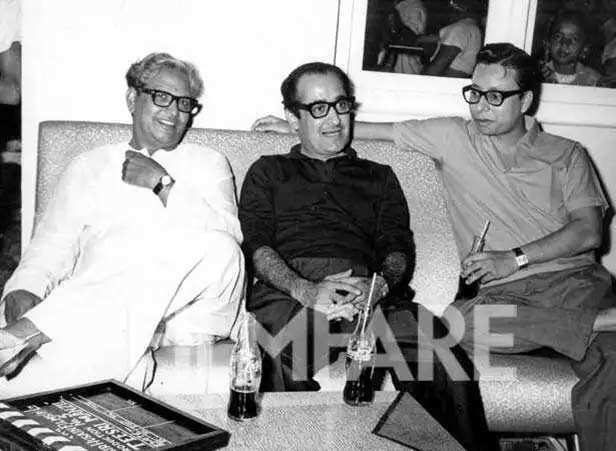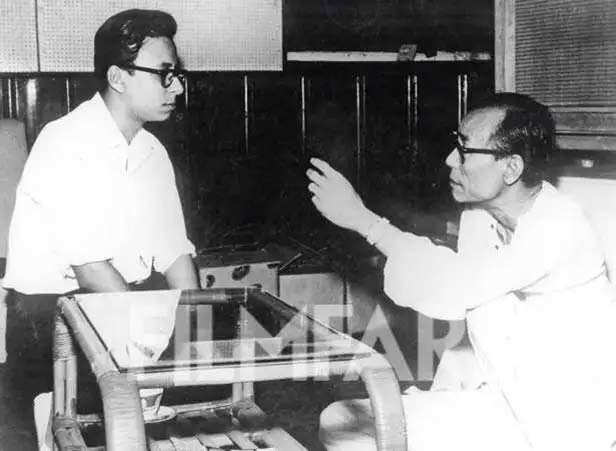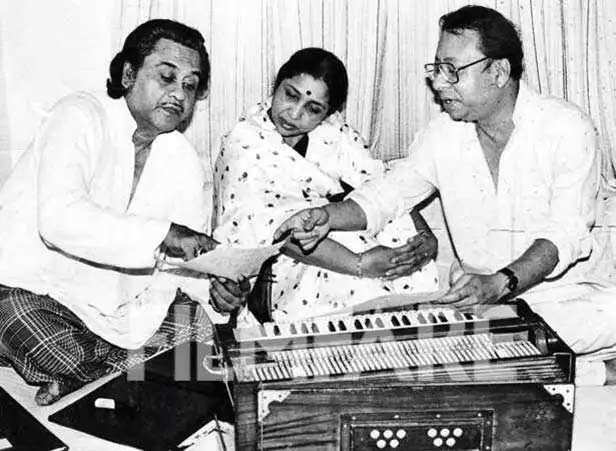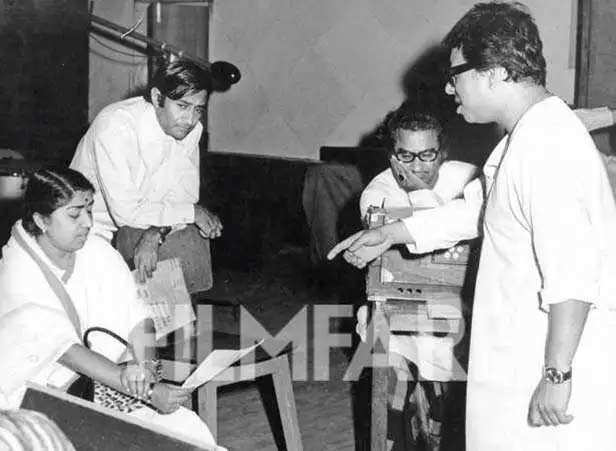[ad_1]
RD Burman was stated to be simply 9 when he reportedly composed the track for the comedian track Ae meri topi palat ke aa, utilized by his father in Fantoosh (1956). One other story goes that he composed the tune for Sar jo tera chakraye from Pyaasa (1957). From an early age, a sample appeared to have set – Dada Burman will work on the arduous, sophisticated numbers whereas Pancham would set the tunes for tender, enjoyable sons. He had a pure aptitude for taking part in devices and learnt music from such luminaries as sarod participant Ali Akbar Khan and tabla participant Samta Prasad. He additionally picked up taking part in the harmonica. The truth is, he’s stated to have performed the harmonica for the Dev Anand track Hai apna dil toh awara from Solva Saal (1958).

Swinging ‘60s

Tremendous ‘70s
The rise of Rajesh Khanna as a famous person coincided with the rise of RD Burman as an excellent composer. Rajesh had tasted success with Pancham and Kishore Kumar in Aradhana, whose songs some say have been really composed by RD as Dada Burman was in poor health throughout the time. He favoured each the singer and the composer within the coming years. Kati Patang (1970) with songs like Yeh sham mastani and Yeh jo mohbbat hai was a musical hit and RD fashioned a fruitful relationship with director Shakti Samanta, leading to such hits like Amar Prem (1971), Ajnabee (1974) and Mehbooba (1976). Amar Prem, with its classical tunes in songs like Raina beeti jaaye or Chingari koi bhadke was not like something RD ever tried. It was his reply to the critics who felt he might solely ape Western music. He additionally fashioned a fruitful partnership with Dev Anand throughout this era, leading to musical hits like Hare Rama Hare Krishna (1971), the place his Dum Maaro Dum acquired elevated to the cult standing, Heera Panna (1973) and Warrant (1975). Lyricist Gulzar was turning filmmaker within the ‘70s and their bond went again to Gulzar’s first credited movie as a lyricist, Bandini (1963), the place he wrote the track Mora gora ang layi le, composed by SD Burman, with son RD because the assistant. Their collaboration in movies like Parichay (1972), whose Beeti na bitai raina is among the most interesting classical primarily based duets of Lata, Aandhi (1975), which might be stated to be the top of their partnership and Khushboo (1975), introduced again the old style melody in Hindi movies. Gulzar allowed him to do his personal issues and RD, who had utmost respect for Gulzar’s poetry, composed tunes the place the singers had prominence whereas music stayed within the background. The very best instance of this maybe is their later collaboration, Ijazzat (1988), whose Mera kuch saaman was pure free verse composed in such a approach that each one you keep in mind is Asha Bhosle’s haunting voice teasing out its that means.

Dismal ‘80s
It’s unusual that the person whose music reigned within the ‘70s all of the sudden discovered himself out of favour within the subsequent decade. It was a mixture of things which led to this. Amitabh Bachchan, the present famous person was doing pure masala entertainers which didn’t require nice music. Then, all of the experiments that RD did within the ‘70s have been copied shamelessly by others within the ‘80s and thereby he misplaced his uniqueness. His hardcore supporters too had moved on to others and he ran out of luck within the sense that movies carrying his music start to flop on the field workplace. He wasn’t answerable for their destiny however one way or the other folks started avoiding him. It’s not that he misplaced his contact. Movies like Khoobsurat (1980), Rocky (1981), Yeh Waada Raha (1982), Masoom (1983) Sunny (1984), and Saagar (1985) are proof sufficient of that. However he was all the time identified for a person who gave out hit albums and never hit songs and ‘80s have been a interval the place particular person songs like Tumse milke zindagi ko yun laga (Chor Police 1983), Roz roz ankhon story ( Jeeva 1984) or Mammiya kero mama (Arjun 1985) stood out reasonably than the entire OST.

‘90s and the top…
His star had actually dwindled by the ‘90s. RD was one of many friendliest of males who appreciated to be surrounded by well-wishers reportedly needed to bribe folks to return and have a drink with him. He didn’t need work however craved for firm. His output virtually dwindled and he had solely sporadic hits like Tu hai mere dil ki rani (Indrajeet 1991), Jaipur se nikli gaadi (Gurudev 1993) and Sili hawa choo gayi (Libaas 1993) to his credit score. His swan track, 1942: A Love Story, whose songs like Ek ladki ko dekha, Rimjhim rimjhim, Rooth na jaana and Pyar hua chupke se, reminded folks he was nonetheless an enormous, acquired launched three months after his launch. It was his finest work in virtually fifteen years and stays, like most of his evergreen songs, as recent at present as when it was initially launched…
[ad_2]
Source link
